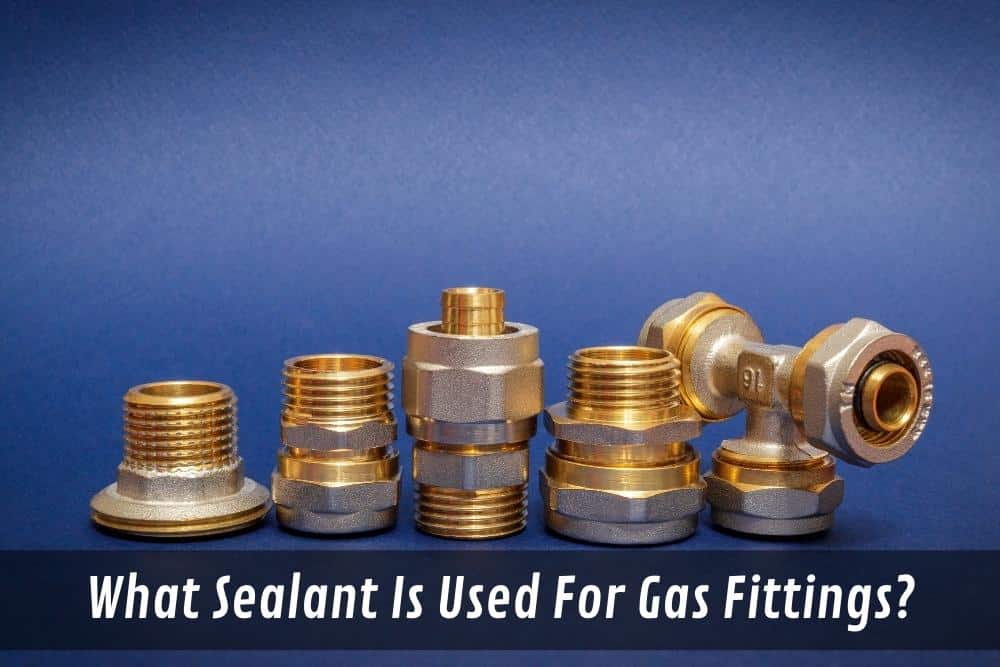Gas fitting sealant is an essential component in any gas installation. Are you aware of the importance of using the right sealant when installing gas fittings? Using the wrong sealant can have serious consequences.
Gas fittings often require sealants to prevent leakage and maintain safe operation. However, not all sealants are created equal. It’s important to choose the right one for the job to ensure that your gas fittings are properly sealed and that there are no potential hazards.
Many people may not be aware of the importance of using the correct sealant on gas fittings and may be unknowingly putting themselves and others at risk. In this article, we’ll discuss the various types of sealants used for gas fittings and which ones are the best for different types of connections. By the end, you’ll have the knowledge to ensure your gas system is safe and secure.
What are some typical materials used for gas fittings?
When it comes to gas fittings, several types of sealants can be used.
- Thread sealants are one of the most common. These sealants are specially designed for use with metal threads and provide a tight, secure fit without the need for hand tools. They also protect against high-pressure and natural gas leaks in applications such as water heaters and boilers.
- Another popular option is a gas sealant, which creates an airtight barrier between two joined components. This type of sealant is pressure tested and must remain sealed for 24 hours to pass certification. It’s ideal for high-pressure applications where a strong bond is needed, such as connecting pipes to an oven or furnace. The temperature range for this type of sealant is typically between -20°F and +500°F.
- For Australian gas fittings, a specialised sealant is often required. This sealant is designed to adhere to metal surfaces and provide an airtight, temperature-resistant bond. It also has a quick curing time to ensure a secure connection as soon as possible.
In conclusion, many different types of sealants are available for gas fittings. Thread sealants are ideal for most applications, while gas seals are best used in high-pressure or extreme-temperature environments. For Australian gas fittings, a specialised sealant is usually recommended for the best performance and safety. By using the right materials for your projects, you can ensure that your gas system is installed safely and securely.
Why is it important to use a gas fitting sealant?
- It’s important to use a gas fitting sealant because it ensures the safety and security of any gas system. A properly sealed connection prevents leaks, which can be dangerous and even deadly. It also helps maintain the pressure and temperature needed for an effective gas system. Without a proper sealant, a connection could become weak or compromised over time, leading to potential hazards.
- Another reason why it’s important to use a gas fitting sealant is that it offers protection from corrosion. Metal surfaces can corrode over time due to exposure to moisture and other environmental factors. Sealing these surfaces with a suitable sealant can help protect them from corrosion and extend their lifespan significantly.
- Finally, proper selection and application of the appropriate sealant are crucial in ensuring that your gas fittings meet the required gas codes and standards. Depending on where you live, there may be specific requirements for gas fittings and the sealants used to secure them. Make sure you check with local authorities or professionals to ensure that you’re meeting all of the necessary standards for a safe and compliant gas system.
What are the step-by-step guides on how to apply a sealant to gas fittings?
- Start by cleaning the area of all dirt, dust, and debris. Make sure to use a brush or cloth to ensure that all surfaces are completely clean before starting.
- Apply the sealant according to the manufacturer’s instructions. This will usually involve using a putty-type material for pipes or a thinner liquid form for threads.
- If you are using thread sealant, make sure to coat the entire length of both threads evenly with the sealant for maximum protection and an airtight fit.
- For pipe connections, apply the sealant in an even layer around the surface of each end of the connection and work it into any crevices or gaps with your hand or a tool.
- Once everything is in place, leave the sealant to cure according to the manufacturer’s instructions. This usually takes between 24 and 48 hours, depending on the type of sealant used and the temperature outside.
- After curing, check for any gaps or weak spots by performing a pressure test if necessary. If all looks good, you can start using your newly sealed gas fittings!
Conclusion
In summary, the best sealant to use for gas fittings is one that is specifically designed for this purpose. Generally, thread sealants are the preferred option as they provide an airtight fit and offer superior protection to metal threads. However, pipe sealants can also be used for certain applications and should be applied evenly around the surface of each end of the connection and worked into any crevices or gaps with your hand or a tool. After allowing the sealant to cure according to the manufacturer’s instructions, perform a pressure test if necessary to make sure there are no gaps or weak spots before using your new gas fittings!
If you’re looking for assistance in repairing and installing gas fittings, our team at Apex Gas Heater is here to help. We provide 24-hour emergency service, so you can rely on us to be there when you need us. Contact us today to find out more about the services we offer!

